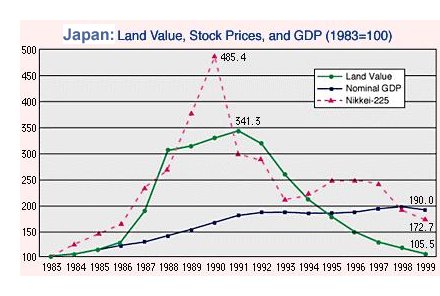

If freeters want to marry they have to find their own housing, usually at their own expense. Some freeters move into a friend’s apartment or house, and share rent and expenses. Japanese housing is compact, and is too small for two families. Even if they inherit the house or apartment, they still have to bear the costs of ownership. Once the parents die, the children will have to pay for their housing themselves. Parents in Japan usually do not force their offspring out of the house.
Japanese economy 80s freeter for free#
Those who dropped out of high school have the worst prospects. Many freeters live for free with their parents as ‘parasite singles’ (‘basement dweller’ or ‘sponge’ in US parlance). This usually has to do with their dropout status from previous educational institutes. The no alternative type cannot find a good job after leaving school or university, and is forced to take low paying jobs. The dream pursuing type has specific dreams incompatible with a standard Japanese career. The moratorium type of freeter wants to enjoy life, and deliberately chooses not to join the rat race of the Japanese work environment. The Japan Institute of Labor classifies freeters into three groups: the ‘moratorium’ type that wants to wait before starting a career, the ‘dream pursuing’ type, and the ‘no alternative’ type. Some experts predict that Japan’s aging population will create a labor shortage that will increase career options for freeters.
Japanese economy 80s freeter full#
Two thirds of freeters have never had a regular, full time job. The rise of internet business has allowed some freeters to work from home and be self-employed. According to a survey by the Japan Institute of Labor in 2000, the average freeter works 4.9 days per week and earns ¥139,000 per month (ca. If they work at all, freeters often work at convenience stores, supermarkets, fast food outlets, restaurants, and other low paying, low skill jobs.

/GettyImages-6233166631-5995dca46f53ba001029cdf6.jpg)
Many Japanese people worry about the future impact of freeters on society. According to some estimates, there will be 10 million freeters in Japan by 2014. The number for 2001 is 4.17 million freeters according to one estimate, and 2 million in 2002 according to another estimate. The employment situation is worst for the youngest freeters. From 2000–2009, the number of freeters increased rapidly. As German (along with English) was used (especially for science and medicine) in Japanese universities before World War II, Arubaito became common among students to describe part time work for university students.Ībout 10% of high school and university graduates could not find steady employment in the spring of 2000, and a full 50% of those who could find a job left within 3 years after employment. Arubaito is a Japanese loanword from German. Another possibility is a shortening of freeloader. The word freeter or freeta was first used around 1987 or 1988 and is thought to be an portmanteau of the English word free (or perhaps freelance) and the German word arbeiter (‘laborer’). Freeters have sometimes been glamorized as people pursuing their dreams and trying to live life to the fullest. The low income makes it difficult for freeters to start a family, and the lack of qualifications makes it difficult to start a career at a later point in life. These people do not start a career after high school or university, but instead earn money from low skilled and low paid jobs. The term originally included young people who deliberately chose not to become salary-men, even though jobs were available at the time. Freeters may also be described as underemployed or freelance workers. Freeter is a Japanese expression for people between the ages of 15 and 34 who lack full time employment or are unemployed, excluding housewives and students.


 0 kommentar(er)
0 kommentar(er)
